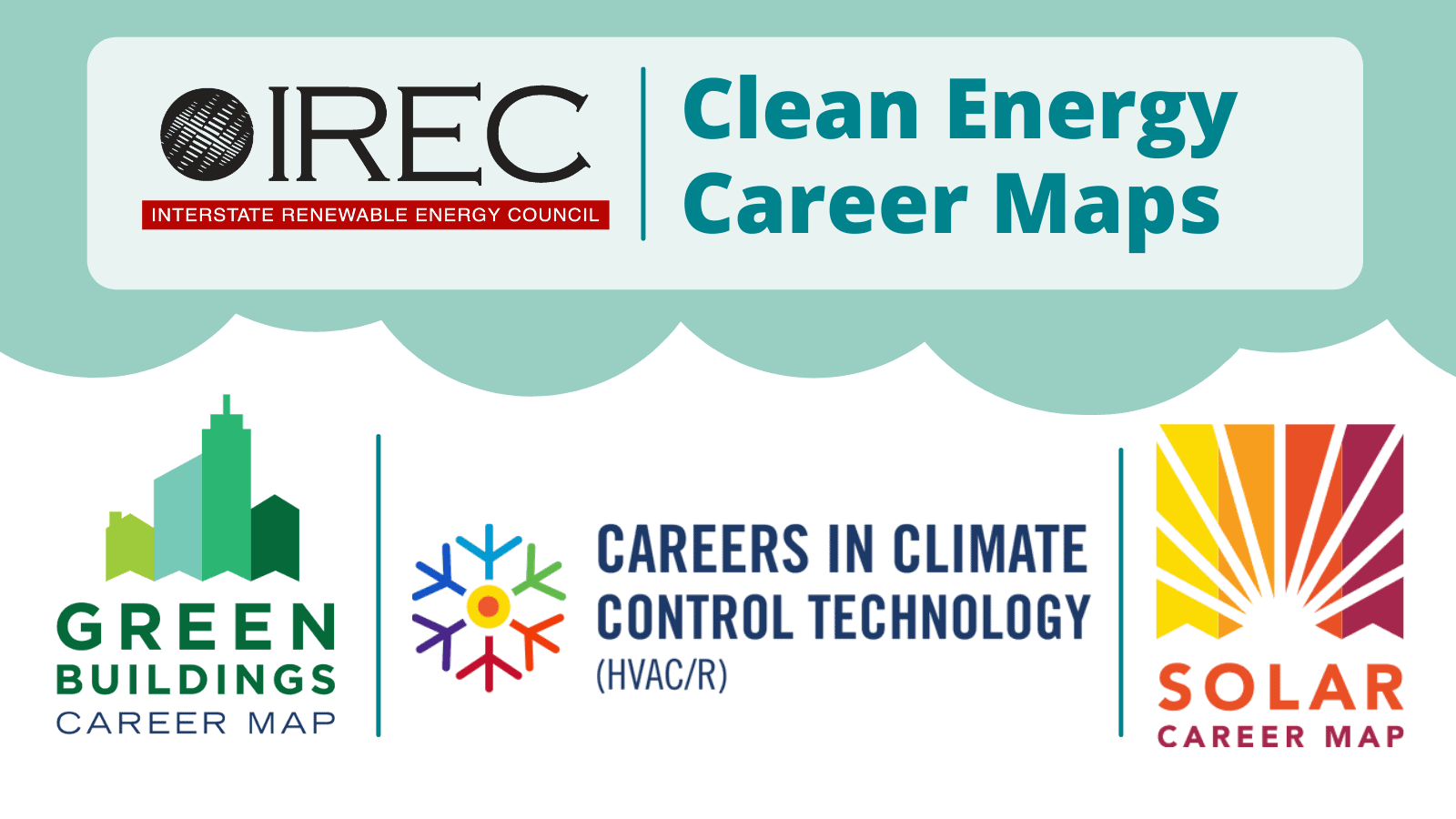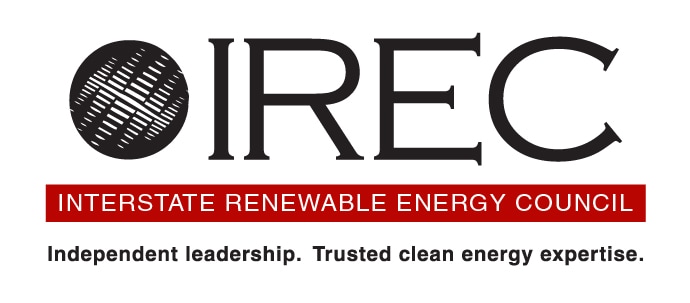By Gwen Brown, Interstate Renewable Energy Council

When it comes to running a successful construction project, having a skilled and well-trained workforce is essential. Yet, difficulty filling these types of roles with qualified workers has been an ongoing challenge for employers in the construction sector. This is especially true for jobs with an energy efficiency focus.
In fact, the 2020 U.S. Energy and Employment Report found that 91% of construction employers in energy efficiency reported that it was somewhat difficult or very difficult to hire new employees!
With this sector expected to grow, it’s clear that new approaches and resources will be needed to create a more robust pipeline of well-trained workers for energy efficiency careers. Enter the Green Buildings Career Map.

Increasing Awareness of Energy Efficiency Jobs and Career Entry Points
The Green Buildings Career Map is an interactive and educational “map” highlighting the breadth of rewarding career opportunities in building energy efficiency. Funded by the U.S. Department of Energy’s Building Technologies Office, the Map was developed by the Interstate Renewable Energy Council (IREC) with the support of experienced industry partners, including the Building Performance Association, the national Community Action Partnership, the Home Builders Institute, the Building Performance Institute, and the National Institute of Building Sciences.
The Green Buildings Career Map features 55 jobs in energy efficiency for buildings across four different industry sectors, as well as over 300 potential advancement routes – all developed with input from industry subject matter experts.
The Green Buildings Career Map exists to increase awareness of jobs related to the energy efficiency of buildings, the training needed to access certain roles, and the opportunities for workers to advance from one position to another as part of a meaningful career. In doing so, the Green Buildings Career Map aims to increase the pipeline of workers for energy efficiency positions by connecting with populations that might not otherwise be aware of the rewards of these kinds of careers.
Lack of awareness of energy efficiency careers is a major blocker to industry growth. As Building Performance Association (BPA) CEO, Steve Skodak explains, “BPA recently conducted outreach to over 400 members and discovered that career opportunity awareness and training accessibility is a barrier to industry growth. We hope the Career Map will encourage individuals to consider a career in energy efficiency, highlight well-paying jobs, and reach those in underserved populations.”

How Can the Green Buildings Career Map Serve Construction Owners?
There are a number of ways that construction owners can leverage the Green Buildings Career Map to directly or indirectly bolster their recruitment efforts, increase employee retention, and support the broader growth of a pipeline of energy efficiency workers.
ONE: Ensure the contractors you work with on projects are aware of the Map and its recruitment benefits. A job that provides a path to a meaningful career trajectory is more attractive to workers. Recruiters can showcase the variety of advancement opportunities stemming from specific jobs, and contractors that are hiring can include this information in job descriptions to highlight the benefits of these positions.
TWO: If you partner with education or training providers (or the contractors you work with do), ask those trainers if they are aware of the Green Buildings Career Map and if they are using it in conversations with current and prospective students. Teachers, counselors, and training providers can also use the Green Buildings Career Map to help the students they serve to identify career paths and training options in energy efficiency and understand the opportunities that stem from different training paths.
As explained by Roger Ebbage, CEM, a faculty member of Energy and Water Education Programs at Lane Community College and a subject matter expert who contributed to the Map’s development, “I have managed the Commercial Building Energy Management two-year degree program at Lane Community College in Eugene, Oregon for 30 years. NEVER have we had a one-stop resource that assists prospective students with such a complete, detailed view of the Green Building workforce options as the Green Buildings Career Map. I will reference the Green Buildings Career Map EVERY TIME I speak with a prospective student. It is simply my best tool for student recruitment.”

THREE: Better retain your current workforce by providing a company-specific career path for advancement. Studies have shown that companies that allow workers to stagnate in their current roles have higher attrition rates. Workers need to know they have a chance at upward mobility. Providing current employees with guidance on a career trajectory goes a long way towards improving retention. The Green Buildings Career Map provides a great tool to help create a career vision for employees and help them consider what skills they might need to advance to other jobs within the company.
FOUR: Finally, the Green Buildings Career Map also has applications for companies interested in increasing the diversity and inclusivity of their workforces. The Map aims to increase the diversity of workers in the energy efficiency sector by connecting populations that have been historically underrepresented with knowledge of energy efficiency career options.
For example, to ensure accessibility to jobseekers with diverse levels of education, the Map highlights 32 “New-Collar” Green Jobs – skilled roles that do not require a four-year college degree. These types of positions can provide pathways to economic opportunity for low-income and other vulnerable populations. Just as construction owners can highlight the map to their contractors and training partners, the Green Buildings Career Map can be a valuable tool in the toolkit of construction owners interested in engaging underserved communities.
For construction owners taking a long-term view of their business needs in the coming years, the availability of enough qualified workers is an essential issue. The Green Buildings Career Map is one key resource in the landscape of workforce development tools that presents opportunities to tackle this important challenge – and to do so in an inclusive and equitable way.

Gwen Brown manages communication programs for Interstate Renewable Energy Council (IREC) to increase awareness of IREC, its mission, programs, and successes among core audiences including state utility regulators and staff, clean energy, and allied industry professionals.

The Interstate Renewable Energy Council (IREC) builds the foundation for rapid adoption of clean energy and energy efficiency to benefit people, the economy, and our planet. Its vision is a 100% clean energy future that is reliable, resilient, and equitable. IREC develops and advances the regulatory reforms, technical standards, and workforce solutions needed to enable the streamlined integration of clean, distributed energy resources. IREC has been trusted for its independent clean energy expertise for nearly 40 years, since its founding in 1982. For more information, visit www.irecusa.org or follow IREC on Twitter, LinkedIn, or Facebook.
